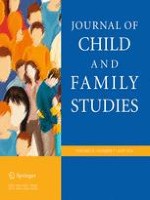04-02-2016 | Original Paper
Parents with Suicidal Behavior: Parenting is Not Always Protective
Gepubliceerd in: Journal of Child and Family Studies | Uitgave 7/2016
Log in om toegang te krijgenAbstract
Deaths by suicide and nonfatal suicide attempts are pervasive problems in the United States, especially among those of child-bearing age. Prior research has indicated that parenthood is a protective factor against suicide. However, no study has examined the reasons for why some parents attempt suicide. Questionnaires (n = 87) and follow-up interviews (n = 75) were completed with parents who recently attempted suicide and were recruited in the Emergency Department. Respondents reported family or relationship problems, depression, and child-related issues as the most common reasons for their attempt. Those who identified parenting as an impetus endorsed significantly more symptoms of depression and higher levels of stress related to dysfunctional parent–child interactions. Over a third of parents reported their child had been informed of their suicide attempt, and nearly a fourth of parents reported their child had been present at the time of the suicide attempt. These findings indicate that parenthood can be a risk factor for suicide among parents with high parenting stress or those experiencing custody issues.
